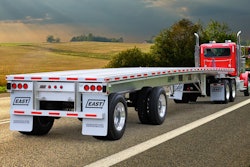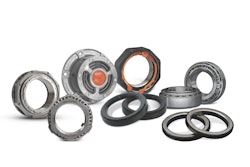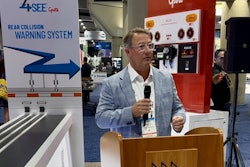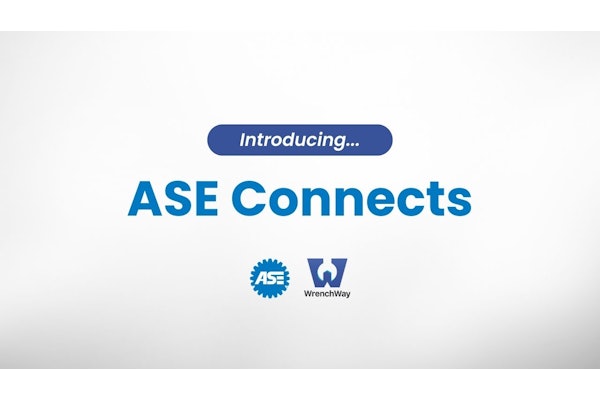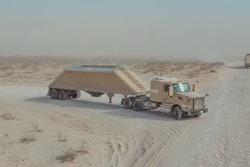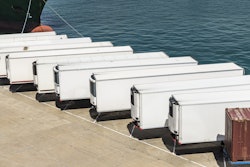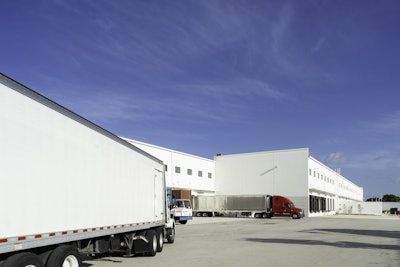
Preliminary trailer orders leapt forward in October, rising 5,700 units higher than September to 17,100 units, 51% month-to-month increase, ACT Research reported Tuesday. FTR’s October estimate was 15,916 units, up 77% from its September total and down only 5% compared to 2024.
ACT Research states because October is typically one of the strongest month for trailer orders, when adjusted for seasonality, the month is amended down to 12,600 units. Yet the company adds that raw total was still 3% better than 2024 as this year remains slightly better than the last.
FTR also reports the sharp month-over-month rebound points to renewed fleet engagement, and fewer cancellations (just 5% per the company’s data), but acknowledges order volumes remain far below the 10-year October average of 37,116 units.
“Sequentially, October’s higher net order intake was expected, as it is usually one of the strongest order months in the annual cycle initiated at the end of Q3 when the industry begins opening next year’s order boards,” says Jennifer McNealy, director of CV market research and publications at ACT Research. “October’s tally brings the year-to-date net order total to 138,300 units, or 17% more net orders than were accepted through year-to-date October 2024.”
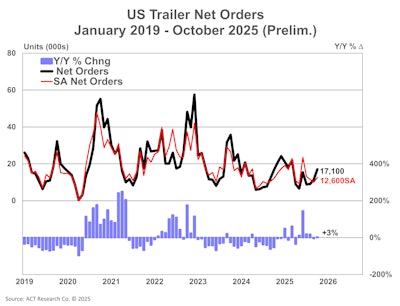
FTR pegs net trailer orders to date at 135,525 units, up 18%. The company states the increase primarily reflects backloaded demand following the November 2024 election, which pushed activity into the first quarter of 2025 that normally would have occurred in late 2024. Despite that weak start to the 2025 order cycle, FTR states its early read on the 2026 order season is even softer. Cumulative orders for September and October combined are down 15% year over year to 24,917 units as multiple market headwinds weigh on fleet sentiment.
“OEMs and suppliers are adjusting to higher costs and softer demand through selective price increases, tighter cost controls and sourcing shifts. Fleets are extending equipment life cycles, prioritizing maintenance and limiting new capital commitments as elevated costs and policy uncertainty continue to weigh on near-term trailer demand,” says Dan Moyer, FTR senior analyst, commercial vehicles.
FTR adds trailer production edged slightly lower in October with builds down 2% month over month but 2% higher year over year at 17,527 units. Despite the modest pullback, FTR reports many OEMs have continued building at relatively elevated rates — likely to preserve labor continuity, support fixed-cost absorption, draw down lingering component inventories ahead of year-end, or preempt potential tariff-related cost pressures.
[RELATED: Tesla redesigning Semi ahead of 2026 mass production launch]
October backlogs declined 2% month over month and 14% year over year to 71,990 units, keeping the backlog/build ratio steady at 4.1 months — its lowest point since mid-2020. With production still running ahead of demand, FTR states OEMs will need to meaningfully lower build rates soon unless the 2026 order season gains further traction.
[RELATED: East Trailers expands dealer network in Washington]
And gaining much traction is hard for the firms to predict.
McNealy cites moderating economic activity, ongoing weak for-hire carrier profitability and ambiguous governmental policy, such as the EPA Low NOx rule, as continuing challenges for the market.
FTR agrees and notes as operators continue to grapple with those conditions it will be hard to make order commitments until market conditions and pricing visibility improve. The company states October’s modest year-over-year decline underscores that ordering behavior is still primarily replacement-driven with limited evidence of fleets adding growth capacity.
“The U.S. trailer market continues to experience meaningful pressure from volatile trade policy, elevated material costs and weakening fleet sentiment,” Moyer says. “Although a Supreme Court ruling could eliminate country-specific tariffs depending on the outcome, the main tariff cost for the trailer industry comes from the 50% Section 232 tariffs on steel, aluminum, and copper that will be unaffected.”
And yet pent-up demand is building, and has been for some time. McNealy says eventually “fleets eventually will need to divert CapEx to trailing equipment purchases deferred over the past few years.”


